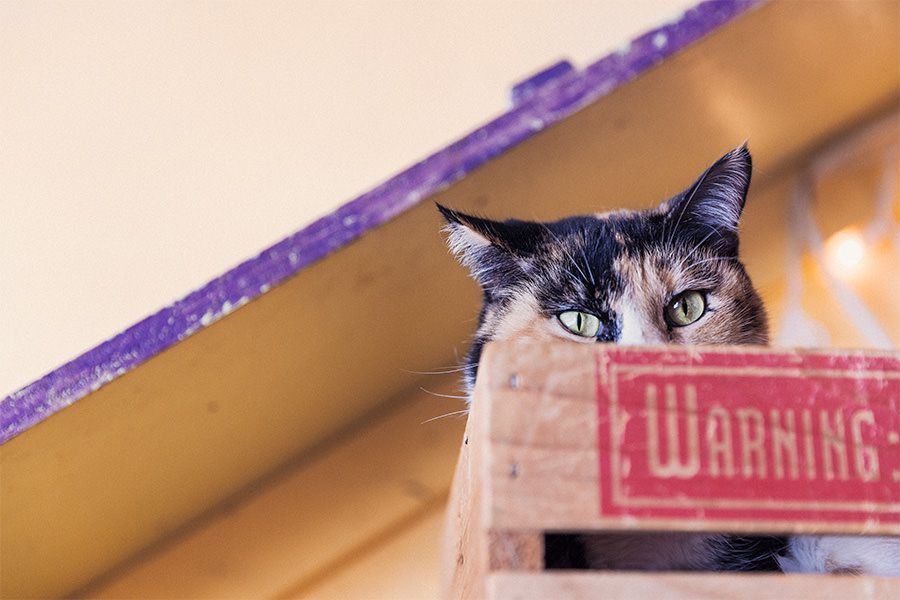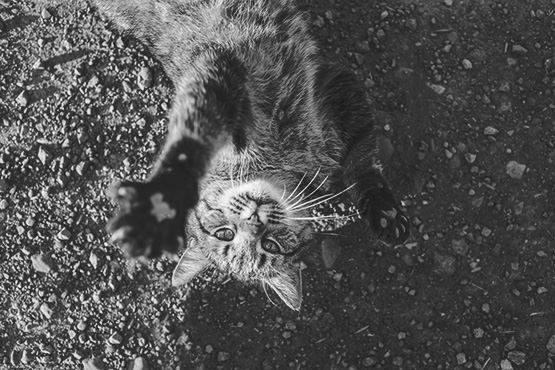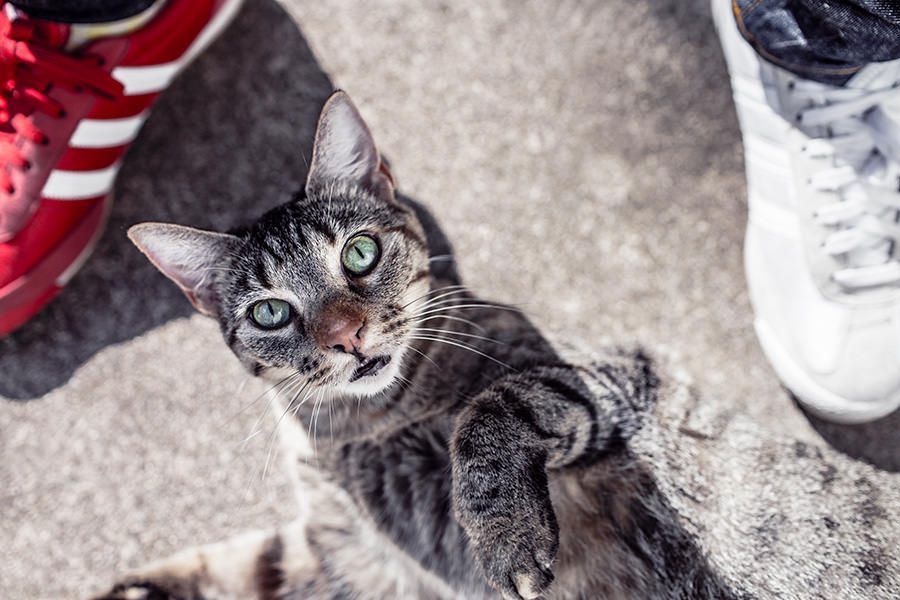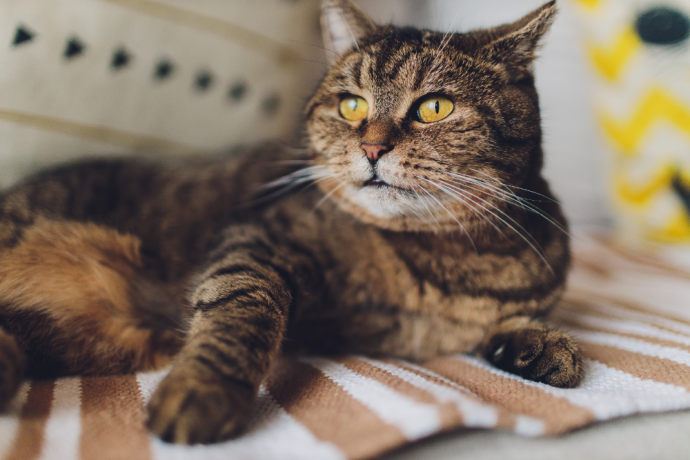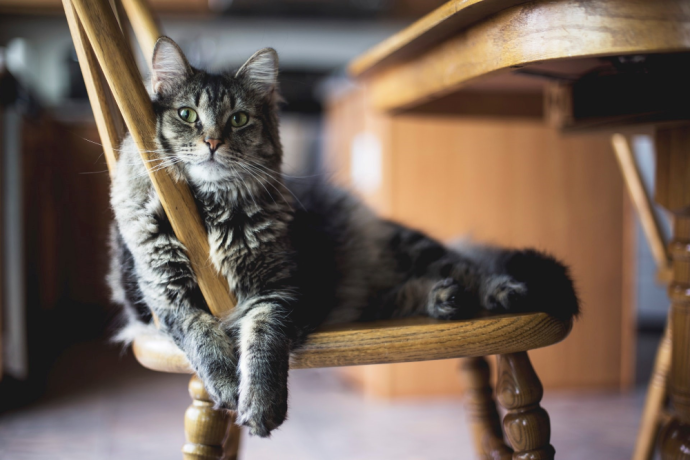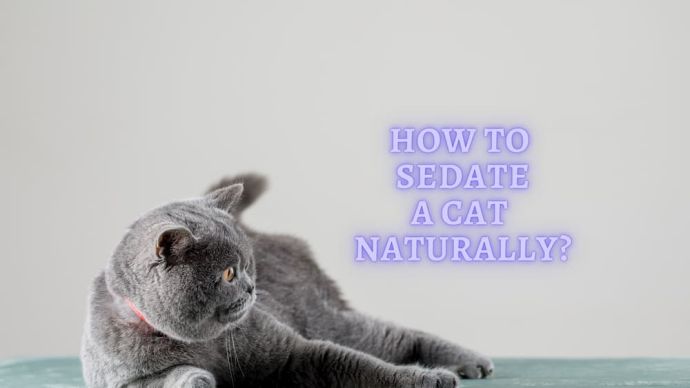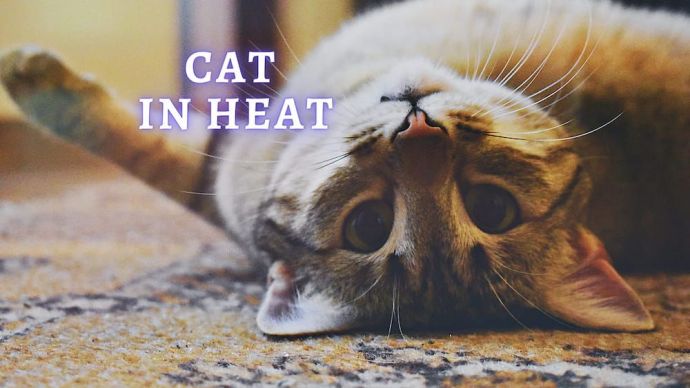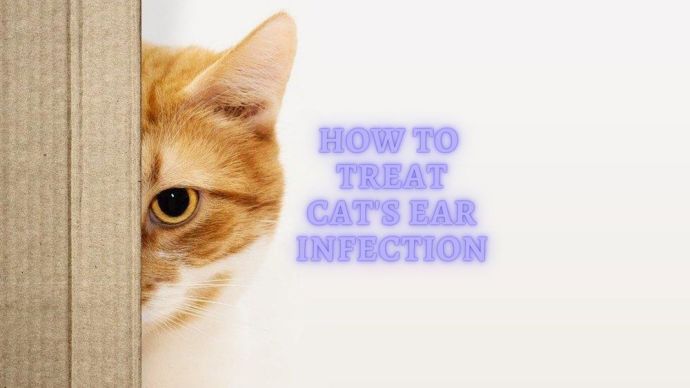Cat Eye Injury: Signs, Diagnosis, and Treatment
Written by:
Author: Dr. Chyrle Bonk
Dr. Chyrle Bonk is an associate veterinarian since 2010 and was a volunteer for Clearwater County Youth 4H. Dr. Bonk contributed to various animal and veterinary related websites and magazines as a way to help keep animals across the globe safe and healthy. When Chyrle not working she spends her time with her own furry crew of dogs, cats, and horses.
View all 10 articlesLearn about our editorial process and veterinary review board.
Viewed: 17587
Updated on: 03/04/2021
Maybe it’s something very noticeable such as excessive tearing, redness, or even bleeding, or perhaps it’s something as minute as a barely perceivable squinting of the eye that you have to look twice at to be sure. Whatever the case, signs that your cat has an eye injury shouldn’t be ignored. The eyes are very delicate organs, so even the most minor abrasions should be seen by a veterinarian, but there are a few things that you can do at home in preparation for that vet visit or following the diagnosis.
Eye injuries can occur in cats for many reasons. They come from fighting with the neighborhood critters, rough and tumble type play with their roommates, or even self-inflicted from an errant claw while scratching their ears. Whatever the cause of an eye injury in cats, the injury’s extent is going to be the primary determining factor of what the treatment will be and how long it will take to heal.
The Parts of a Cat’s Eye
Just like there are many parts to your cat’s personality, there are many parts to their eye that can become injured. Let’s take a look at the different parts, injuries that can occur, and how they are treated for a speedy recovery.
1. Eyelids
Your cat has three eyelids per eye, that’s right, three. They have an upper and a lower eyelid like you do, they also have a third eyelid or a nictitating membrane as it’s called. That third eyelid attaches at the lower corner closest to your cat’s nose, and when it closes, it moves up and outward to cover the eye. Most of the time, you won’t even notice this eyelid unless your kitty is feeling ill or if there’s an injury to the eye. All three eyelids are subject to injuries like tears or lacerations.
2. Cornea
The cornea is the clear membrane that covers the outer surface of the eyeball. It’s what holds the liquid filler of the eye in. It’s made up of three layers, which is important when your veterinarian is trying to determine the extent of an injury to the cornea.
3. Sclera
The sclera is the white membrane that covers the back part of the eye. It’s like the counterpart to the cornea; only it’s not clear, so light doesn’t penetrate it. You can only see a small part of the sclera in a normal cat eye. It is subject to the same injuries that the cornea is, but these injuries are less common since it’s not nearly as out there. For the rest of this article, when I talk about corneal injuries, assume sclera injuries can be the same.
Signs of an Eye Injury in Cats
Cat eye injuries can be dramatic or subtle, and in some cases, you really have to know what you’re looking for. I think we all can recognize an injury when a cat walks up with a protruding or even prolapsed eyeball, or even one that is shrunken and sunken in like a dried raisin. You may also only notice a tiny bit of discharge or that your cat has a slight head tilt with one eye slightly more closed than the other. These are definitely the extremes to cat eye injuries. Somewhere in between, you will find squinting, tearing, colored discharge, blood, and discoloration to the eye as signs that an eye injury has occurred.
Eye injuries are painful and irritating so your cat may try to rub their face on the carpet, furniture, and even you to try to ease that discomfort. They may be painful enough that they don’t want to eat or play and instead choose to hunker down in a dark corner.
READ MORE: Cat Ear Infection Symptoms
What Cat Eye Injuries Look Like
What you’ll see if your cat gets an eye injury will depend on where the injury is. For eyelid injuries, you may notice redness, blood, or swelling around the eye. There may also be a flap hanging from where the eyelid is torn. Remember that third eyelids underneath the upper and lower eyelids can be injured too, so the torn flap can appear to be in the eye.
For injuries to the eyeball itself, you may actually not see anything other than watery or thick, colored discharge from the eye. For minor corneal abrasions that only involve one or two of those aforementioned layers, the eyeball may look normal. For more serious corneal ulcers, where the injury affects all three layers of the cornea, you may notice a blue, cloudy appearance to the eye, indicating fluid absorption and swelling of the cornea. For very serious penetrating injuries where all three layers are punctured, you may see fluid leaking from the eyeball and a shriveling or shrinking as the eyeball loses its shape.
How are Cat Eye Injuries Diagnosed?
Anything abnormal with your cat’s eye should warrant an immediate visit to the veterinarian. While most eye injuries heal quickly and completely, the more serious ones can lead to permanent damage and blindness in the affected eye. Your veterinarian will start with a thorough examination. Local anesthetics in the form of an eyedrop may be necessary to get a look through those tightly squinted eyelids.
With scratches to the eye, your vet may place a fluoresce in stain into the eye to determine the extent of the damage. This orange stain adheres to ulcerated areas and shines a bright green when hit with light. Your veterinarian will check under the eyelids and around the globe to find any foreign objects, such as grass seed, that may be lurking, causing the scratch to the eye.
How are Eye Injuries in Cats Treated?
Again, treatment depends on the extent of the injury. For eyelid issues, your kitty may need to be sedated to glue or suture the torn eyelid back together. For eyelid lacerations that aren’t completely torn, medication is usually enough to promote full healing. For prolapsed or perforated eyes, surgery will be necessary to replace the eye back into the socket or remove the eye if it’s beyond repair.
The treatment for scratched eyeballs is going to differ based on whether it’s a full-thickness ulcer or a more minor abrasion.
- Corneal abrasions will heal quickly, usually within 3-5 days. Treatment will include an antibiotic eye drop to help ward off bacterial infections and further promote healing. These eye drops need to be applied every 6-8 hours, so get your cat wrangling pants on as most kitties will be done with this type of attention after the first round.
- Corneal ulcers that are wide or long, as well as deep, may require surgery. Ulcers need a little more protection to ensure that they heal properly and since most kitties won’t take to playing pirate for a week and wearing an eye patch, your veterinarian may suture that third eyelid shut over the eye to create a kind of healing blanket. The eye will be left this way for about a week and then rechecked for healing progress. Antibiotic eye drops will need to be administered during this time as well.
How Long does it take for an Eye Injury to Heal?
Eyelids will heal within a matter of days, even if they have to be glued or sutured. Look for only a faint scar after 7-10 days. Corneal abrasions will also heal in a matter of days, less than a week if there’s no infection or further complication.
Corneal ulcers may take just a bit longer and can go through a dramatic transformation. I always tell my clients that an injured eye always looks worse before it looks better. That’s because the normal cornea is clear, there are no blood vessels. The cornea gets its nutrients from blood vessels that border the clear parts. When the cornea becomes injured, the eye, in all of its amazingness, actually routes or builds blood vessels to cover the injury, supplying it directly with healing factors. This makes the eyeball turn a scary red with spider web looking blood vessels branching out from the injury site. Fluid accumulation, or swelling, can also occur making the injury and surrounding areas a cloudy, blue. So, you can see why I warn my clients that things are going to get a little ugly as when they bring the cat in there is usually just a squinty, watery eye, but a couple of days later it looks like something out of a sci-fi movie.
Most corneal ulcers heal within 2-3 weeks. If a third eyelid flap procedure was performed to protect the eye initially, it’s usually removed in about a week if all goes well. I always advise clients to use the prescribed eye drops for a couple of days past when the eye looks completely normal again.
Will a Cat’s Eye Injury Heal on its Own?
The eye is an amazing organ. So, yes, some minor injuries will heal on their own. By minor, I mean eyelid injuries that don’t create a torn flap and minor corneal abrasions. But be aware that minor corneal abrasions can turn to corneal ulcers and corneal ulcers can turn to perforations that can drain and permanently damage the eye. These injuries may also contract an infection that delays or completely stop healing if left untreated as well.
What if my Cat gets Scratched in the Eye?
I’m just going to say it again, any eye injury, no matter how minor seeming it may be, should be seen by a veterinarian. We would love nothing more than prescribing some eye drops and telling you all will be well in a few days. We would rather not see an eye that needed treatment three days ago and now is a festering mess with damage that may not be repairable.
Sorry to scare you, but you’re always better safe than sorry for eye injuries. If you notice your kitty squinting or tearing from an eye, the first thing you can do is take a warm, wet washcloth and wipe the outside around the eye. This is especially important if there is thick, colored discharge coming from it. You can even flush the eye with saline or water, not contact solution, to try to remove any foreign objects and to reduce irritation. If your kitty tolerates a cool compress over the eye, it can decrease some discomforts while you wait to see the vet.
Once your cat has been diagnosed and treatment has been prescribed, follow it! I can’t stress this enough. I don’t know how many owners have stopped giving eye drops because it was too hard, or they thought the eye was healed. Don’t stop medication until told by your veterinarian. Always return for a follow-up visit as well to make sure everything has healed completely before resuming your life before a feline eye injury.
If you’re having trouble giving your cat those dreaded eye drops, here are a few tips:
- Enlist help. The success of eye drops greatly increases the more helpers that you have. One or two people can hold the kitty while one places the drops.
- Cat sack or towel burrito. One of the greatest inventions in feline health care is the cat sack. It allows you to zip your cat into a bag with only a small hole for the face to stick out. This will allow you to treat the eye without worrying as much about the flailing legs and claws. If you don’t have a cat sack, wrapping your cat in a bath towel burrito-style can work the same way. Leave their head sticking out one end and make it snug enough to keep those legs in but without squeezing the air out of them.
- Be ready for a treasure hunt. Cats learn quickly that the best way to avoid treatment is to hide, and they will. Consider keeping them in a small room without many places to duck and cover, like a laundry room or bathroom, while you are treating their eye.
Eye injuries in cats can be scary to deal with. They may look bad, feel bad, and can be difficult for you, the cat parent, to treat. However, most eye injuries will heal quickly and easily if caught early and treated properly. Don’t let any eye injury in your cat go unnoticed, see your veterinarian immediately for the best possible outcome.
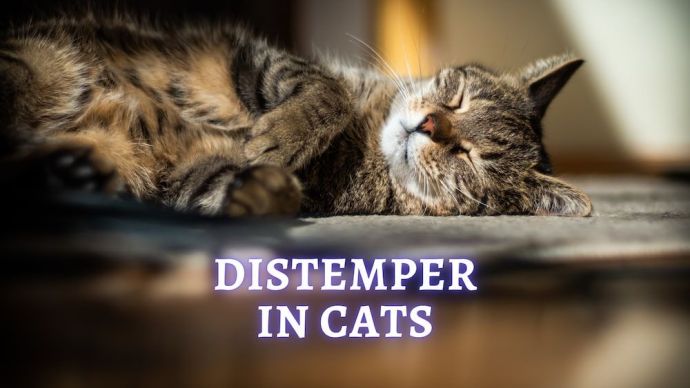 Cat Veterinary Tips Distemper in Cats: What is Feline Panleukopenia? Causes, Signs, Diagnosis and Treatment
Cat Veterinary Tips Distemper in Cats: What is Feline Panleukopenia? Causes, Signs, Diagnosis and Treatment - 224
- 0
 Cat Care Why Does My Cat Attack My Legs? 10 Reasons Why and What To Do About It (Vet-Approved Advice)
Cat Care Why Does My Cat Attack My Legs? 10 Reasons Why and What To Do About It (Vet-Approved Advice) - 45566
- 21
 Cat Veterinary Tips Cat Stomach Gurgling: Vet Advice on Why is Your Cat Stomach Gurgling?
Cat Veterinary Tips Cat Stomach Gurgling: Vet Advice on Why is Your Cat Stomach Gurgling? - 35339
- 4
 Cat Veterinary Tips My Cat Lost its Voice: Can Cats get Laryngitis? (Vet Advice)
Cat Veterinary Tips My Cat Lost its Voice: Can Cats get Laryngitis? (Vet Advice) - 23247
- 13
 Cat Veterinary Tips Signs That Your Cat is in Labor: How to tell if a Cat is Pregnant?
Cat Veterinary Tips Signs That Your Cat is in Labor: How to tell if a Cat is Pregnant? - 14225
- 1









